Basic Aztec Facts: Aztec Houses
Forget the giant pyramids for a sec. What about where regular Aztecs lived, worked, and raised families within Aztec society? Let's peek inside the Aztec calli , or house, and see what daily life was really like.
House vs. Home
The Aztecs had two words for it. A calli was the physical building, the bricks and roof. But chantli was your home, your people, your place.
You’d usually say nochan ("my home"), which shows how a person's identity was tied to their family.
The Commoner's Calli
Most Aztecs were commoners, or macehualtin , and lived in simple but practical homes.
Building Materials
You built a basic Aztec house with mud. Mix mud with sand, water, and straw, pack it in a mold, and let it sun-dry... Bam, you’ve got adobe bricks. These bricks sat on a low stone foundation, with a wooden frame and a thatched roof on top.
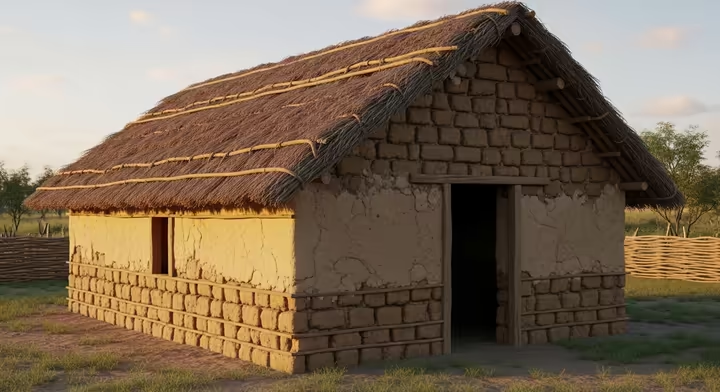
Life on the Lake
In the capital, Tenochtitlan, houses on man-made islands ( chinampas ) had to be lighter. These homes, called chinancalli , used a wattle-and-daub technique. This was a wooden frame woven with reeds, then slathered in mud.
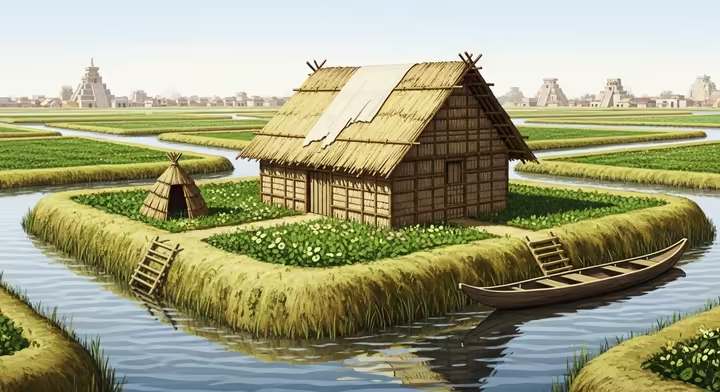
Layout and Looks
Your average house was a simple, one-room rectangle. Open doorway (maybe a cloth hanging there), no windows, no chimney... cozy, right? The outside walls were often whitewashed with lime plaster to brighten things up and keep the inside cool.
Several related families would build their houses around a shared central patio. This courtyard was the real living room, where people worked, ground maize, and socialized.
The Noble's Palace
If you were a noble, or pilli , your house was a whole different story. These residences, called a tecpan , were designed to show off your wealth and power.
Fancier Materials
No mud bricks for you. Nobles built with finely cut stone like tezontle , a reddish volcanic rock. The walls were covered in gleaming white lime plaster, and the insides featured sweet-smelling cedar and pine for beams and doors.
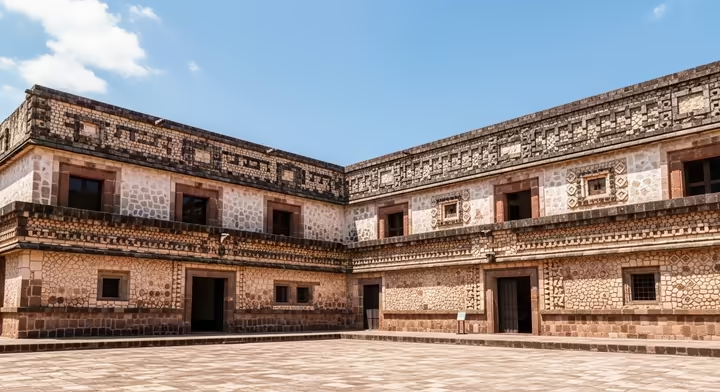
Showing Off
The biggest status symbol was a second story. Only nobles were legally allowed to build one, making their homes physically tower over everyone else's. Outside walls also had elaborate stone carvings, while inside walls were covered with colorful murals of myths and battles.
A Peek Inside a Tecpan
A noble's tecpan served as a home, office, and courtroom. The layout carefully separated public spaces from private ones. You'd enter into large courtyards where the lord would hold court and receive visitors.
Deeper inside were private family quarters, storerooms, and beautiful gardens. A Spanish soldier, Bernal Díaz del Castillo, was amazed by Moctezuma's palace, writing about its huge halls, shiny walls, gardens with pools, and even a zoo with jaguars!
What Was Inside?
Inside, an Aztec calli was both practical and sacred.
Furniture (or lack thereof)
Furniture was minimal. The most important item was the petlatl , a woven reed mat. It was your chair during the day and your bed at night.
Other than that, you might have a low wooden stool, called an icpalli , and wooden chests or baskets to store your belongings.
The Sacred Hearth
The heart of the home was the hearth, made of three stones arranged in a triangle. It was both a stove and a sacred altar to the fire god, Huehueteotl-Xiuhtecuhtli.
Around the hearth was the women's domain. Here you'd find a metlatl , a stone for grinding maize, and a comalli , a clay griddle for cooking tortillas. Most homes also had a small family altar with clay figures of household gods.
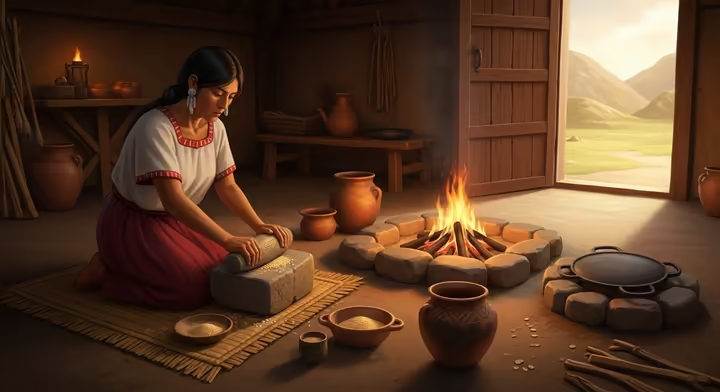
The Sweat Bath
The Aztecs were very clean. Many homes had a temazcal , or sweat bath, which looked like a small, low dome made of adobe or stone.
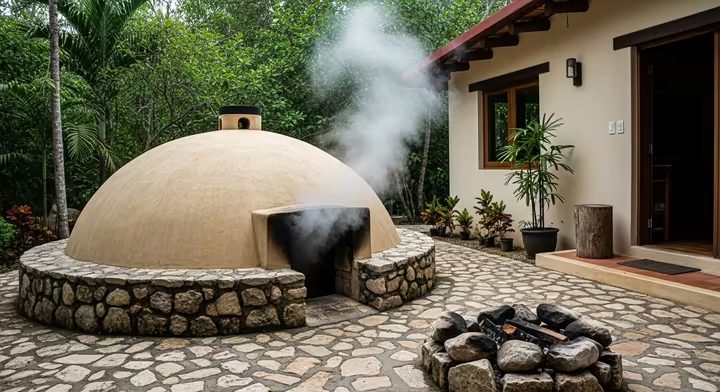
You'd heat rocks in a fire, bring them inside, and pour water on them to create steam. It was used for both physical and spiritual cleansing.
So... How Do We Know All This?
Good question. We piece the story together from three main clues.
First, archaeology. Archaeologists dig up physical proof like stone foundations, bits of plaster, and even old trash. This gives us the ground-level view of how these houses were built.
Second, codices. The Aztecs and their descendants created illustrated books like the Florentine Codex , which are full of drawings of houses and daily life.
Third, Spanish accounts. Conquerors like Bernal Díaz del Castillo wrote about what they saw, describing the amazing palaces in Tenochtitlan. Putting all these clues together gives us a pretty good, but still incomplete, picture of the Aztec home.